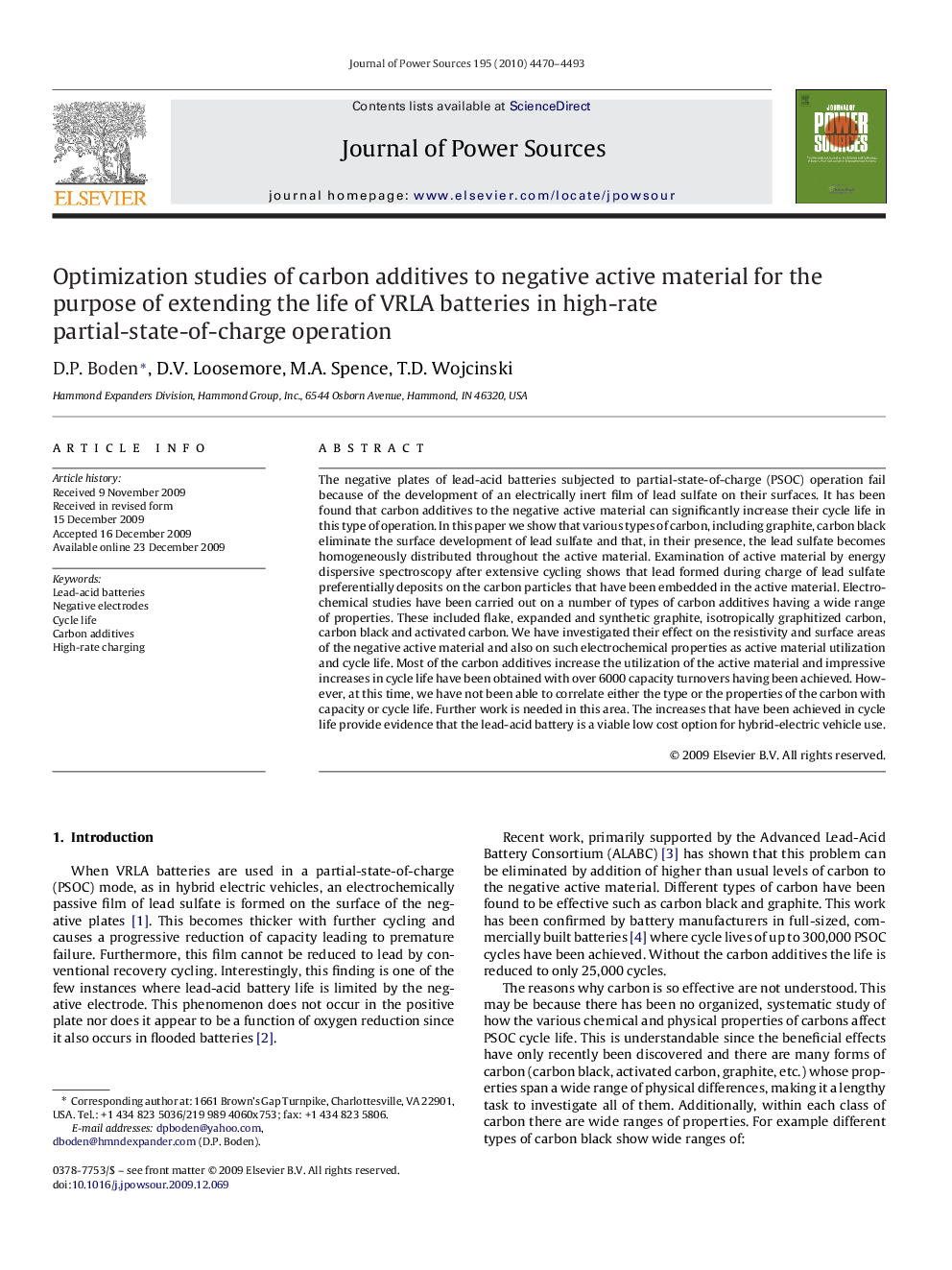| Article ID | Journal | Published Year | Pages | File Type |
|---|---|---|---|---|
| 1293778 | Journal of Power Sources | 2010 | 24 Pages |
The negative plates of lead-acid batteries subjected to partial-state-of-charge (PSOC) operation fail because of the development of an electrically inert film of lead sulfate on their surfaces. It has been found that carbon additives to the negative active material can significantly increase their cycle life in this type of operation. In this paper we show that various types of carbon, including graphite, carbon black eliminate the surface development of lead sulfate and that, in their presence, the lead sulfate becomes homogeneously distributed throughout the active material. Examination of active material by energy dispersive spectroscopy after extensive cycling shows that lead formed during charge of lead sulfate preferentially deposits on the carbon particles that have been embedded in the active material. Electrochemical studies have been carried out on a number of types of carbon additives having a wide range of properties. These included flake, expanded and synthetic graphite, isotropically graphitized carbon, carbon black and activated carbon. We have investigated their effect on the resistivity and surface areas of the negative active material and also on such electrochemical properties as active material utilization and cycle life. Most of the carbon additives increase the utilization of the active material and impressive increases in cycle life have been obtained with over 6000 capacity turnovers having been achieved. However, at this time, we have not been able to correlate either the type or the properties of the carbon with capacity or cycle life. Further work is needed in this area. The increases that have been achieved in cycle life provide evidence that the lead-acid battery is a viable low cost option for hybrid-electric vehicle use.
